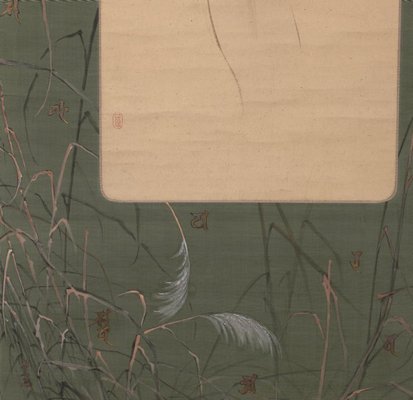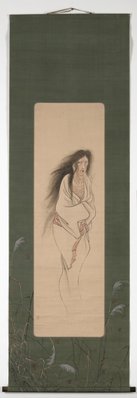

-
Details
- Place where the work was made
-
Kyoto
→
Japan
- Date
- late 19th century
- Media category
- Painting
- Materials used
- hanging scroll; ink and colour on paper
- Dimensions
- 127.0 x 38.0 cm image; 206.0 x 66.0 cm mount
- Credit
- Purchased with funds provided by the Yasuko Myer Bequest 2023
- Location
- Not on display
- Accession number
- 244.2023
- Copyright
- Artist information
-
Imao Keinen
Works in the collection
- Share
-
-
About
Yūrei, or ghosts, are often represented in Japanese paintings, prints and popular culture. They are manifestations of the dead who remain in this realm because they are not ready to leave. Some yūrei are driven by a desire for revenge but a person does not need to be the instigator of the grudge to be affected by it. In ancient times, events such as natural disasters were considered the acts of enraged ghosts.
The motif of a ghost as a pale woman dressed in white with dishevelled black hair and limp hands floating above the ground can be traced to a painting by the artist Maruyama Ōkyo from around 1750. The picture was said to be a representation of the artist’s lover Oyuki who appeared to him after her death. Before Ōkyo, ghosts were depicted as they had appeared in life, but other artists soon adapted the new style. Paintings of ghosts were sometimes displayed at the entrance to Japanese houses to frighten any intruders who may arrive while the occupants were out.
With her thin chest, wild hair, blackened lips, white robe and fearful expression, Imao Keinen’s ghost follows the conventions established by Ōkyo. Imao Keinen worked as an official artist to the imperial household. He is also known as a print designer associated with the shin-hanga (new print) movement of the early 20th century.
-
Places
Where the work was made
Kyoto




